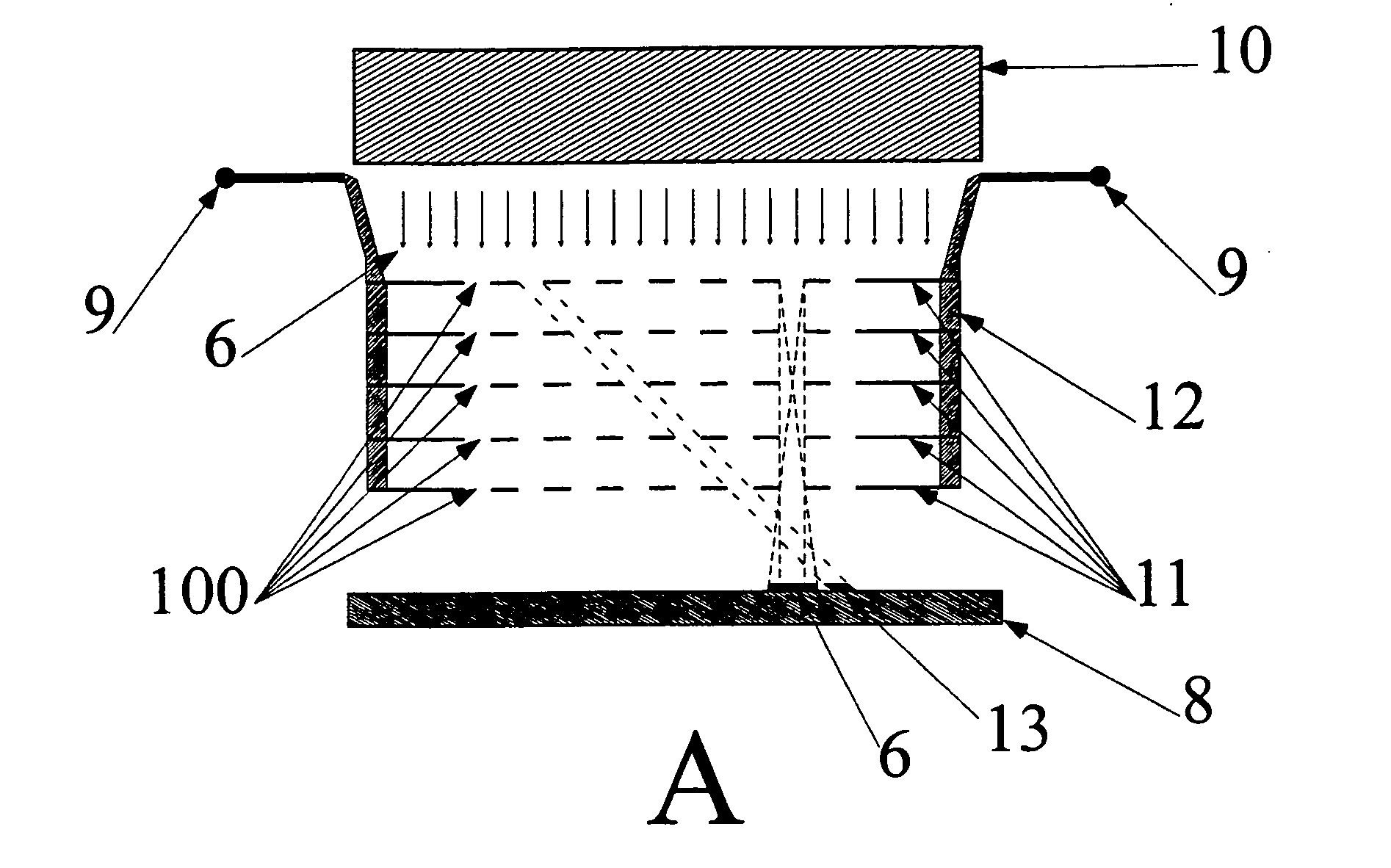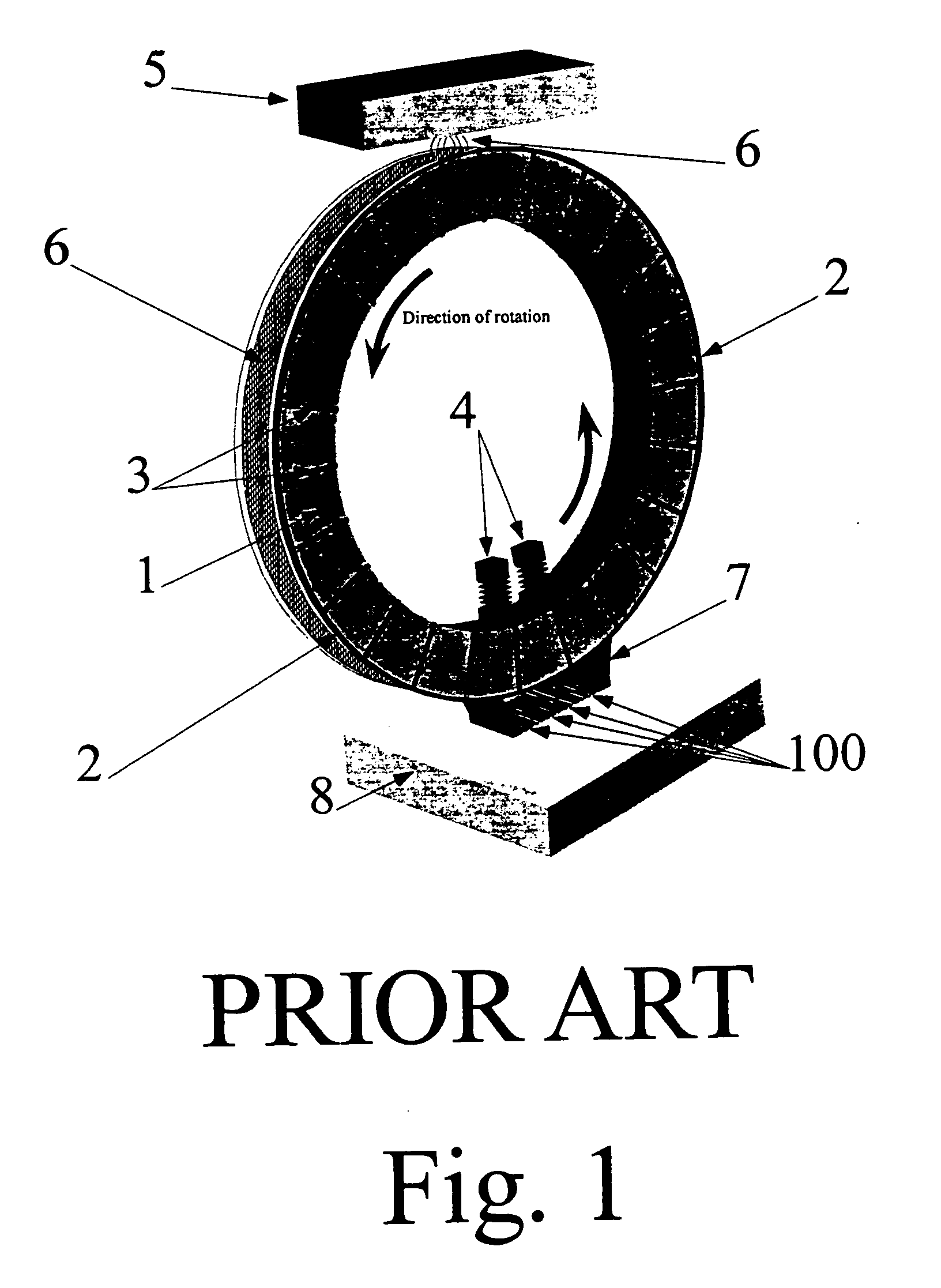Patterned thin-film deposition using collimating heated masked assembly
a technology of collimating heated masks and patterned thin films, which is applied in the direction of vacuum evaporation coatings, solid-state devices, coatings, etc., can solve the problems of large area contact masks, large contact masks, and fine-sized features that are prone to warping and distortion
- Summary
- Abstract
- Description
- Claims
- Application Information
AI Technical Summary
Benefits of technology
Problems solved by technology
Method used
Image
Examples
Embodiment Construction
[0049] The present invention utilizes a multilevel heated collimating shadow mask assembly that resolves the problems discussed hereinbefore. FIGS. 3A and 3B show two embodiments of such an assembly, constructed of a multiplicity of individual shadow masks 11, stacked equidistantly (FIG. 3A) or aperiodically (FIG. 3B). In both cases, the apertures or openings 100 in all of the individual shadow masks are vertically aligned with respect to each other, allowing free passage of the vapor stream from the generic evaporating heating element 10 to the substrate 8. Moreover, each of the masks 11 is fabricated from an electrically resistive material. Passing current through the contacts 9 and 12 resistively heats this mask assembly to prevent the clogging of the mask openings 100 caused by deposition of the evaporant 6 onto the masks 11. The heated collimating mask assembly provides the necessary collimation of the vapor stream material 6 for deposition of high definition patterns of materi...
PUM
| Property | Measurement | Unit |
|---|---|---|
| Temperature | aaaaa | aaaaa |
| Electrical resistivity | aaaaa | aaaaa |
Abstract
Description
Claims
Application Information
 Login to View More
Login to View More - R&D
- Intellectual Property
- Life Sciences
- Materials
- Tech Scout
- Unparalleled Data Quality
- Higher Quality Content
- 60% Fewer Hallucinations
Browse by: Latest US Patents, China's latest patents, Technical Efficacy Thesaurus, Application Domain, Technology Topic, Popular Technical Reports.
© 2025 PatSnap. All rights reserved.Legal|Privacy policy|Modern Slavery Act Transparency Statement|Sitemap|About US| Contact US: help@patsnap.com



